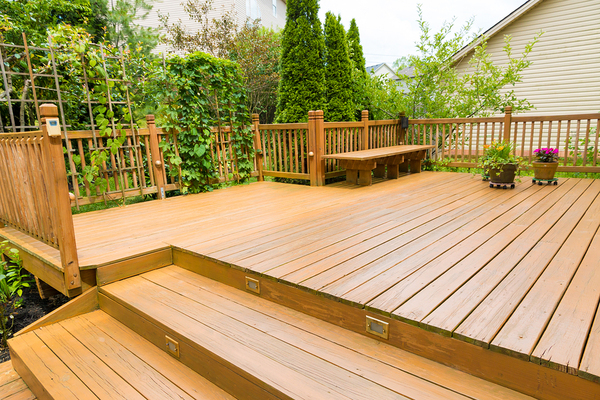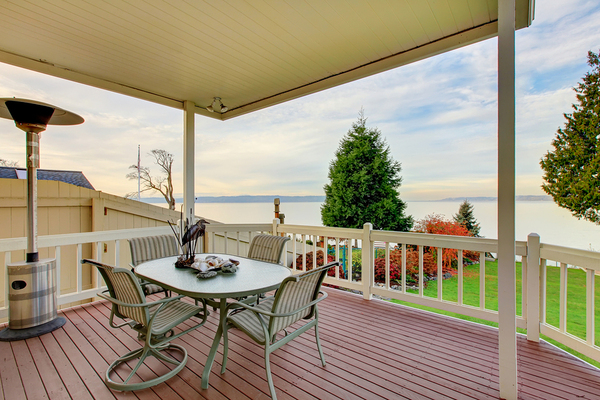
The stairs in the foreground are not steep, but there should still be a handrail.
No matter where you live and work, many homes you inspect will have decks. According to the Center for International Trade in Forest Projects, 85 percent of all single-family homes in the United States have a deck or similar structure.
Decks are often built by handymen or homeowners because they are fairly simple to construct. It’s true, some decks are complex and fancy, but the standard, everyday deck is easy to build. But is it easy to build correctly? No. Deck building encompasses important safety considerations. Some decks are quite high off the ground, and a fall could mean serious injury or death.
The ASHI Reporter points out that although in some areas, regulations for decks improve their safety and durability, the truth is that many decks were constructed before these regulations were made, or without the benefit of a permit and inspection.
What should you look for when inspecting decks?
- Check the connections.
One of the most common reasons for deck collapse is connection failure; the deck separates from the house or from the posts holding it up. Or sometimes the stairs disconnect from the deck.All of these situations are avoidable if the right connectors are used. Decks should always be connected with heavy-duty bolts, never nails, Inspectapedia says. Joist hangers and connectors should be used for each support beam as well.Deck Magazine brings up the point that the danger of beam rotation can still exist with this type of bracing, however. To cut the risk, they suggest using notched beams, splice blocks, or diagonal support braces. - Look for flashing on decks attached to houses. ASHI says this is a necessary protection for the wood. It doesn’t matter how secure your connections are if the wood rots.
- Check the spacing between balusters. Although there may be no code regulating this in your area, balusters that are too far apart may allow a child to slip through. The rule of thumb is that they should be no more than 4 inches apart.Check also to see if they are affixed with nails or screws. Over time, nails will lose their grip and it will be possible to pull the balusters off with your hands. This is a safety hazard for small children who may lean on them and fall through.

Are there only 4 inches between balusters here? We don’t think so.
- Look for railings on stairs. This may not be regulated by code either, but many injuries have been logged due to the absence of railings on decks. Users don’t need to be elderly or carrying a plate of hamburgers to lose their footing and tumble down the stairs, although this may occur more often at parties at which alcohol is served.
- Check that footings are properly connected. Some deck posts merely sit on top of footings, or inside a footing without connectors. Posts should be connected to footings.
- See if there are any drainage issues around the deck. Posts that are close to downspouts or in the path of a sprinkler are more prone to rot. A rotting post cannot properly support a deck and poses a safety risk.
ICA School’s home inspection courses can teach you everything you need to know about inspecting homes, including decks and porches. To learn more about our online home inspection courses, check out our website today.
The post 6 Deck Inspection Tips for Home Inspectors appeared first on Home Inspection Training & Certification Online.
